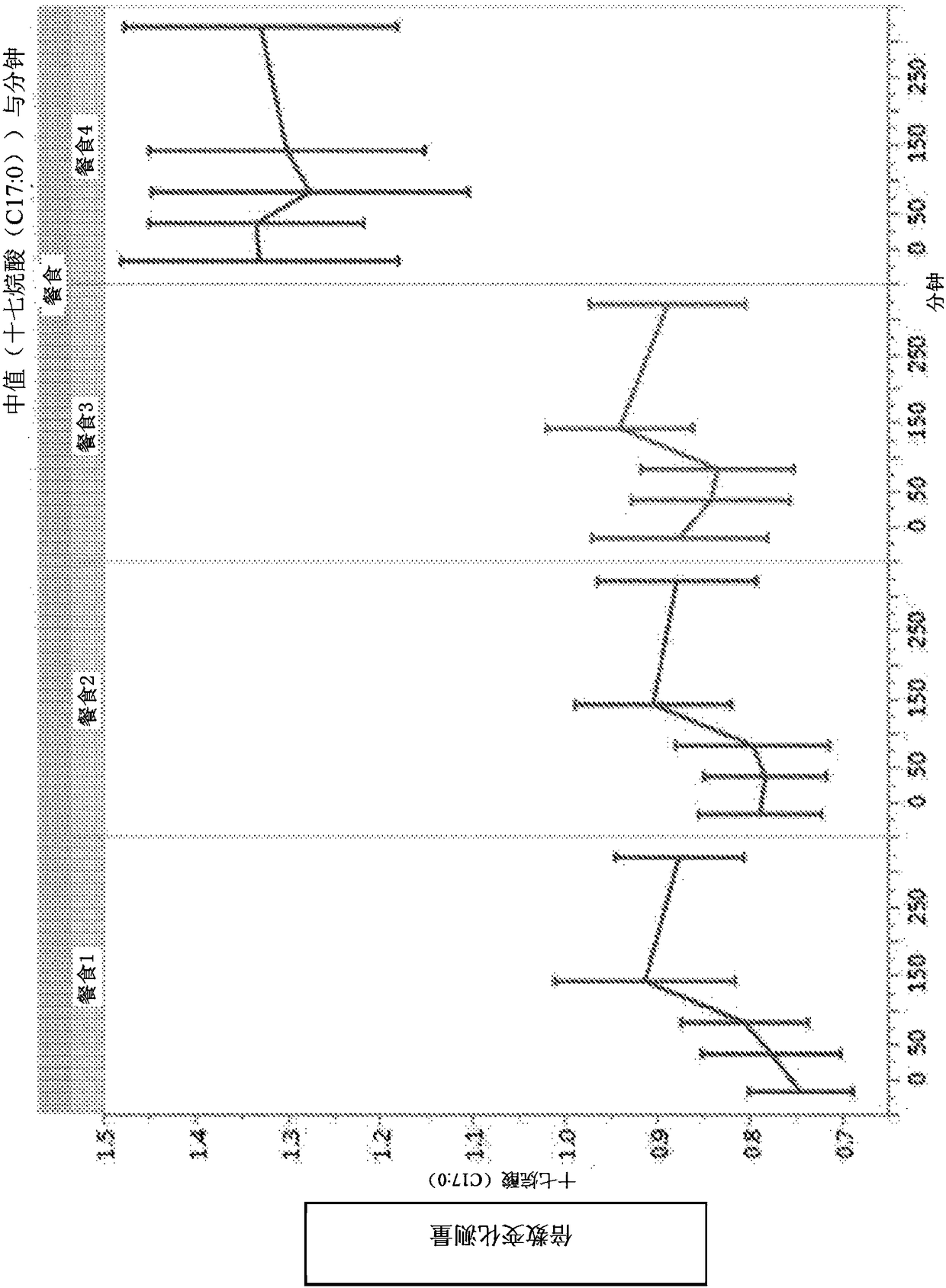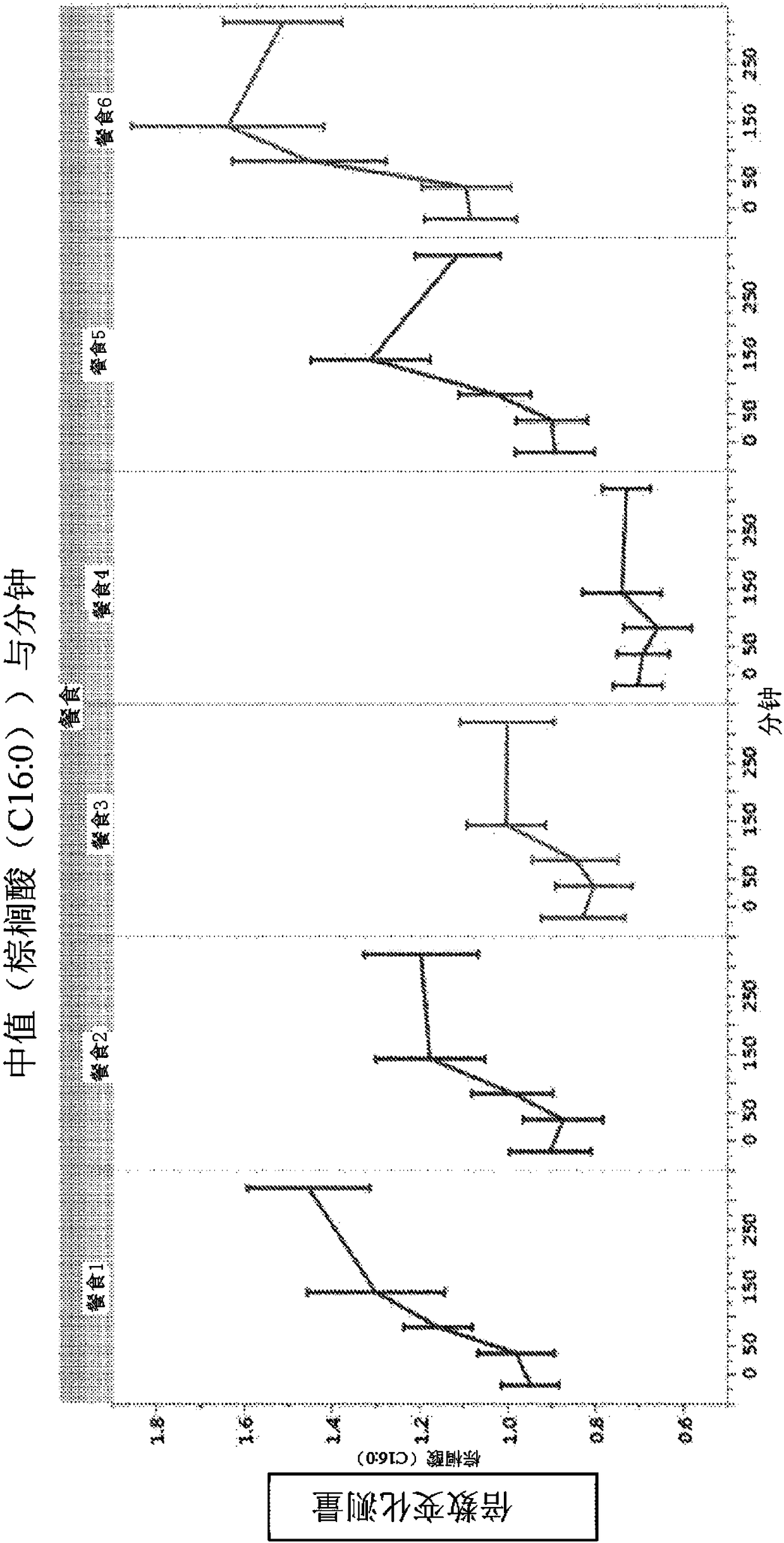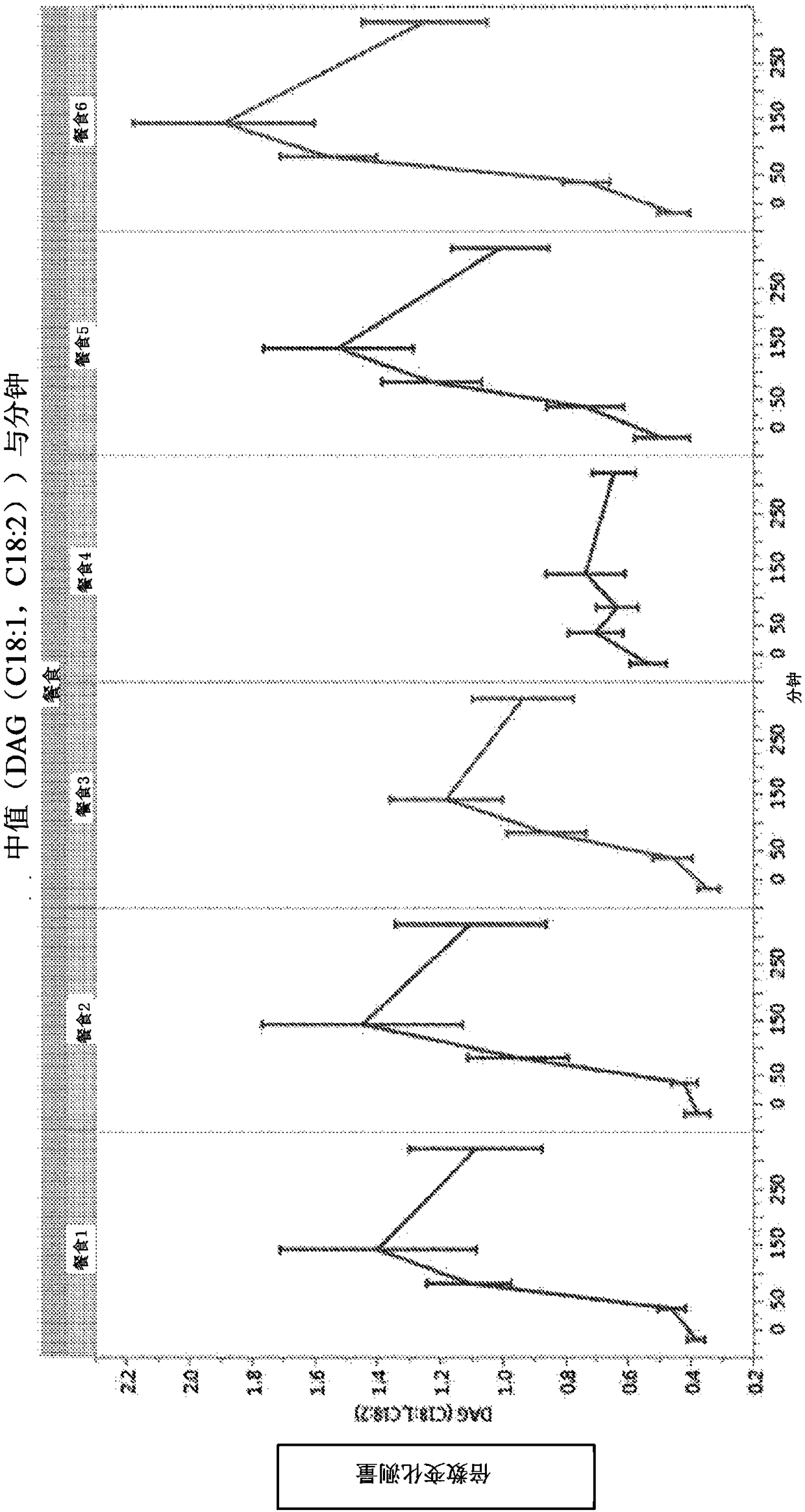Food product for regulating lipid metabolites and methods
A food and fat technology, applied in the field of food and methods for regulating lipid metabolites, can solve the problems of changing the characteristics of the postprandial time course, affecting the metabolic mode, etc., and achieve the effect of increasing endogenous
- Summary
- Abstract
- Description
- Claims
- Application Information
AI Technical Summary
Problems solved by technology
Method used
Image
Examples
Embodiment
[0082] The objectives of the study were to determine the differential benefits of macronutrient diets for cats and to investigate differences in macronutrient composition in postprandial metabolite profiles in cats.
[0083]A study was performed on 19 cats aged 1 to 2 years to investigate the effect of different nutritious meals on postprandial gut hormone levels. Four meals (meal 1, meal 2, meal 3, and meal 4) were used to study lipid metabolite levels of palmitic acid, diacylglycerol (DAG), triacylglycerol (TAG) and heptadecane Endogenous levels of acid. In addition, two additional meals (Meal 5 and Meal 6) were also used to study the lipid metabolite levels of palmitic acid, diacylglycerol (DAG), and triacylglycerol (TAG). Six meals (labeled Meal 1, Meal 2, Meal 3, Meal 4, Meal 5, and Meal 6) were made using the same ingredients but in different ratios to provide a range of protein to fat ratios. Meal 4 was manufactured to have a protein:fat ratio within the target range ...
PUM
 Login to View More
Login to View More Abstract
Description
Claims
Application Information
 Login to View More
Login to View More - R&D
- Intellectual Property
- Life Sciences
- Materials
- Tech Scout
- Unparalleled Data Quality
- Higher Quality Content
- 60% Fewer Hallucinations
Browse by: Latest US Patents, China's latest patents, Technical Efficacy Thesaurus, Application Domain, Technology Topic, Popular Technical Reports.
© 2025 PatSnap. All rights reserved.Legal|Privacy policy|Modern Slavery Act Transparency Statement|Sitemap|About US| Contact US: help@patsnap.com



